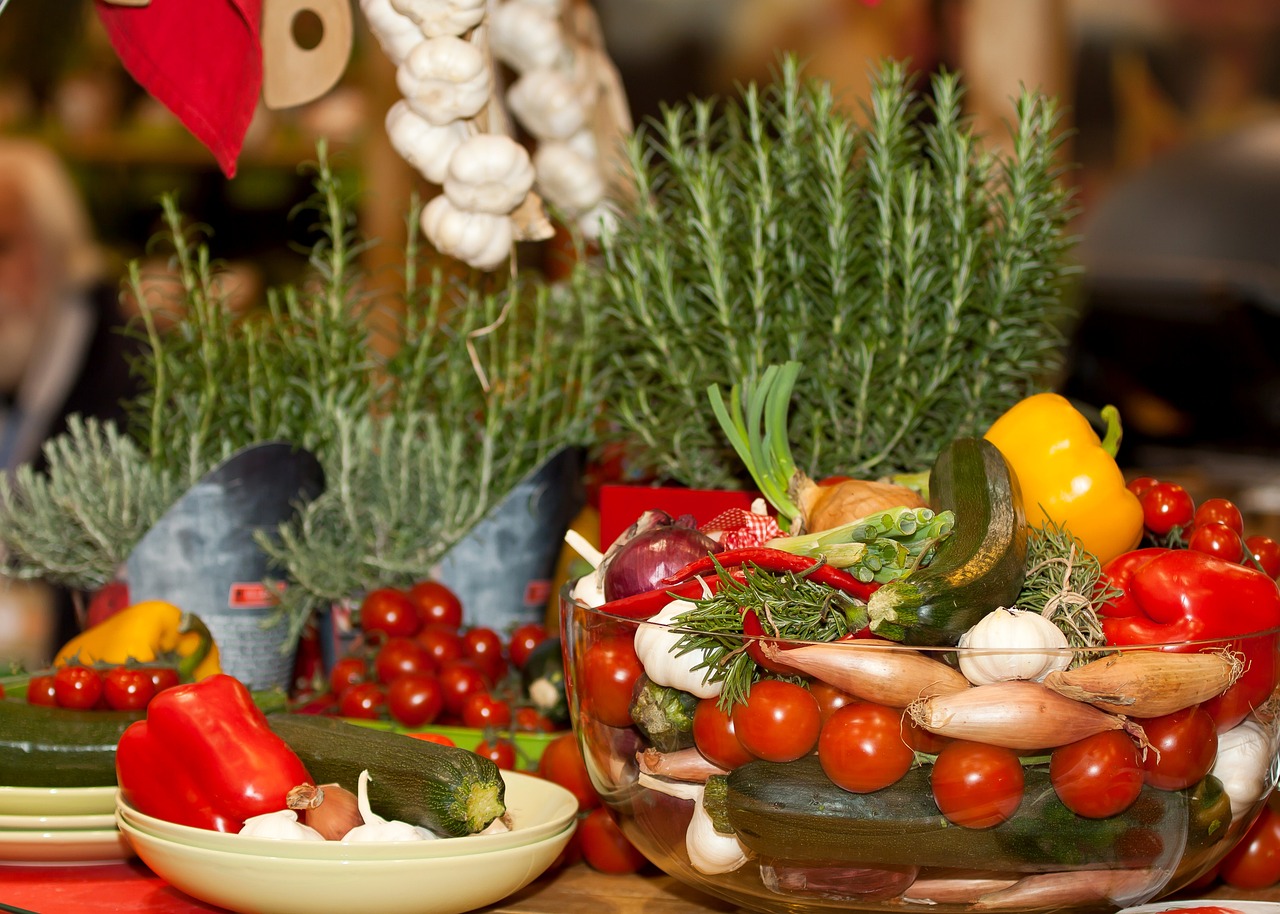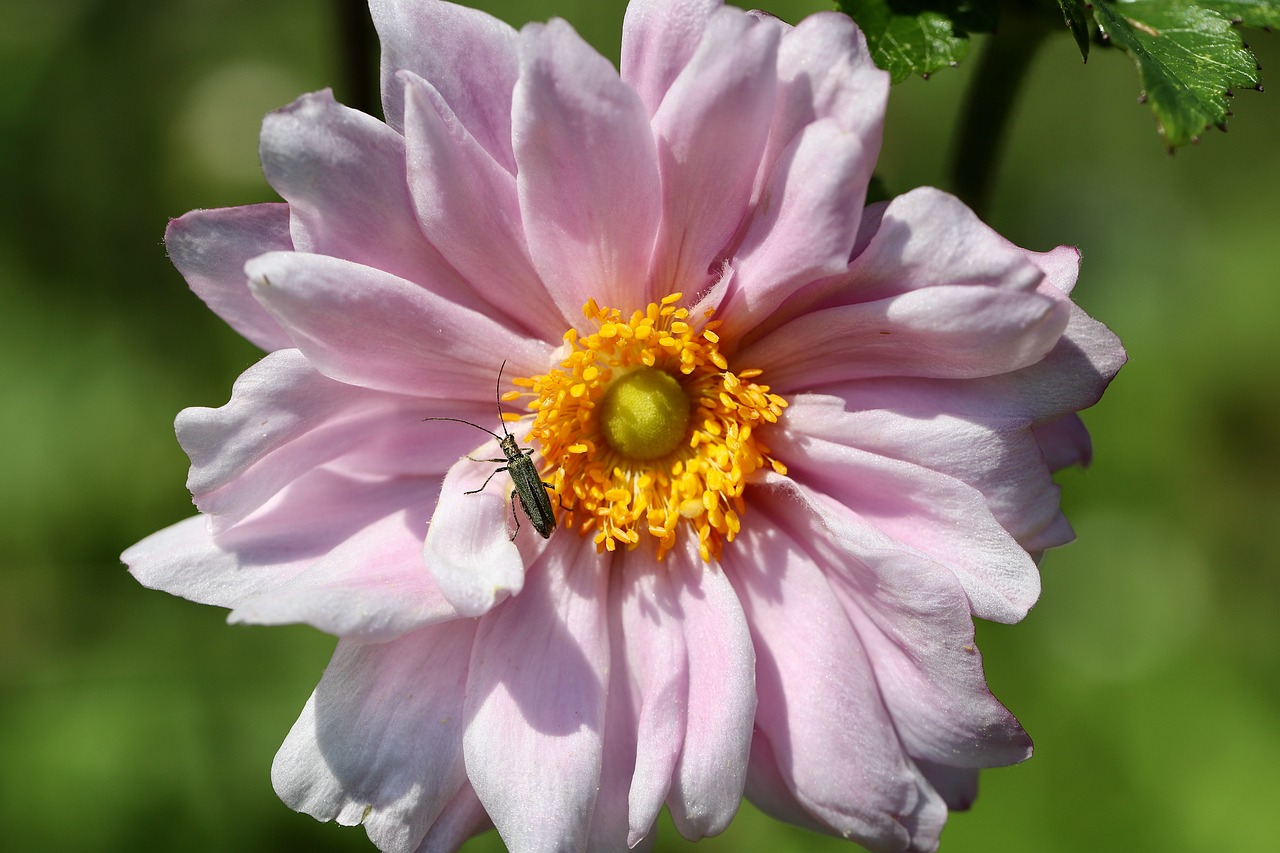
How to Grow Your Own Herbs and Vegetables in Your Kitchen
Are you tired of relying on store-bought herbs and vegetables that lack freshness and flavor? Why not take matters into your own hands and grow your own herbs and vegetables right in your kitchen? With a small indoor garden, you can have access to homegrown produce all year round, ensuring that your dishes are always bursting with the freshest flavors.
Creating a kitchen garden is not only convenient but also sustainable. By growing your own herbs and vegetables, you reduce your carbon footprint and minimize the need for transportation and packaging. Plus, it’s a rewarding and fulfilling experience to see your plants thrive and harvest the fruits of your labor.
Choosing the Right Plants
When it comes to indoor gardening, choosing the right plants is crucial for success. Not all herbs and vegetables are well-suited for growing indoors, especially in limited sunlight and small spaces. However, there are certain plants that thrive in these conditions, making them ideal choices for your kitchen garden.
Herbs like basil, parsley, and mint are excellent options for indoor gardening. They require minimal sunlight and can be grown in small pots or containers. These herbs not only add flavor to your dishes but also provide a pleasant aroma in your kitchen.
Leafy greens such as lettuce, spinach, and kale are also great choices for indoor gardening. They can be grown in shallow containers and do well in low light conditions. These greens are packed with nutrients and are perfect for adding freshness to salads and sandwiches.
Other suitable plants for indoor gardening include cherry tomatoes, peppers, and microgreens. These plants can be grown in compact containers and can thrive with limited sunlight. Imagine plucking fresh cherry tomatoes from your kitchen garden to use in your homemade pasta sauce or adding homegrown peppers to your favorite stir-fry dish.
By choosing the right plants for your indoor garden, you can enjoy the benefits of homegrown herbs and vegetables all year round. Not only will you have a convenient supply of fresh produce, but you’ll also add a touch of greenery and life to your kitchen environment.
Setting Up Your Indoor Garden
Creating an optimal environment for your plants is crucial to their successful growth indoors. To set up your indoor garden, you will need a few essential pieces of equipment:
- Containers: Choose containers that are suitable for the size of your plants and the available space in your kitchen. Options include pots, hanging baskets, and vertical planters. Consider the advantages and considerations of each type before making your selection.
- Soil: High-quality soil is essential for the health and growth of your herbs and vegetables. Opt for organic soil that is rich in nutrients and well-draining. Different plants may have specific soil requirements, so be sure to research and provide the appropriate soil for each plant.
- Lighting: Indoor plants require adequate light for photosynthesis. Depending on the natural light available in your kitchen, you may need to supplement it with artificial lighting. Options include fluorescent lights or LED grow lights. Position your plants in a way that ensures they receive enough light for healthy growth.
By selecting the right containers, soil, and lighting, you can create an optimal environment for your indoor garden. This will provide your herbs and vegetables with the necessary conditions to thrive and produce a bountiful harvest.
Container Selection
When it comes to growing herbs and vegetables in your kitchen, choosing the right containers is essential. There are several options to consider, each with its own advantages and considerations. Let’s explore some of the container options for your indoor garden:
- Pots: Traditional clay or plastic pots are a popular choice for indoor gardening. They come in various sizes and are easily available. Pots provide good drainage and allow for easy mobility, making them ideal for smaller spaces.
- Hanging Baskets: If you have limited counter or floor space, hanging baskets can be a great solution. They can be suspended from the ceiling or mounted on walls, adding a decorative element to your kitchen while maximizing space.
- Vertical Planters: Vertical planters are perfect for those who want to make the most of their vertical space. These planters are designed to stack multiple pots vertically, allowing you to grow a variety of herbs and vegetables in a compact area.
Consider the size of your kitchen and the amount of sunlight it receives when selecting containers. Additionally, think about the aesthetic appeal and functionality of the containers. Choose containers that complement your kitchen decor and provide adequate space for the plants to grow.
Soil and Fertilizer
When it comes to growing herbs and vegetables indoors, the quality of the soil and the type of fertilizer you use are crucial factors for their success. Using high-quality soil ensures that your plants receive the necessary nutrients and have proper drainage. Organic fertilizers are recommended as they provide a balanced mix of nutrients without the use of harmful chemicals.
Herbs and vegetables have specific requirements when it comes to soil and fertilizer. Some plants prefer well-draining soil, while others thrive in soil with higher moisture retention. Research the specific needs of the herbs and vegetables you plan to grow and choose a soil mix that meets those requirements.
Additionally, understanding the nutrient needs of your plants is essential for their growth. Different herbs and vegetables have varying nutrient requirements, and it’s important to provide them with the right balance of nitrogen, phosphorus, and potassium. Organic fertilizers, such as compost or worm castings, can help replenish the nutrients in the soil and promote healthy plant growth.
Consider creating a feeding schedule for your indoor garden to ensure that your plants receive the necessary nutrients at the right time. Regularly monitor the condition of your plants and adjust the fertilization accordingly. Remember, over-fertilizing can be detrimental to your plants, so it’s important to follow the recommended guidelines for each type of herb or vegetable.
By understanding the importance of using high-quality soil and organic fertilizers, as well as meeting the specific nutrient requirements of your herbs and vegetables, you can ensure that your indoor garden thrives and provides you with a bountiful harvest.
Lighting Requirements
When it comes to indoor gardening, lighting is a crucial factor for the healthy growth of your plants. Different lighting options are available, and it’s important to understand their benefits and how to position your plants to ensure they receive adequate light.
One option for indoor lighting is natural light. If your kitchen has a window that receives ample sunlight, you can position your plants near it to take advantage of the natural light. However, keep in mind that the intensity and duration of sunlight may vary throughout the day and seasons, so you may need to adjust the positioning of your plants accordingly.
Another option is fluorescent lights, which are commonly used for indoor gardening. They are energy-efficient and provide a good spectrum of light for plant growth. Fluorescent lights can be installed above your plants, providing them with consistent and even lighting. It’s important to choose the right type of fluorescent lights, such as cool white or daylight bulbs, to ensure optimal growth.
LED grow lights are another popular choice for indoor gardening. They are highly efficient and can be customized to emit specific wavelengths of light that plants need for photosynthesis. LED grow lights are available in various colors, including red and blue, which are essential for different stages of plant growth. These lights can be positioned close to your plants without generating excessive heat, making them ideal for small indoor spaces.
When positioning your plants, consider their light requirements. Some plants, such as herbs, require around 6-8 hours of light per day, while others, like leafy greens, may need up to 12-16 hours. Make sure to place your plants within the recommended distance from the light source to avoid burning or stretching of the plants.
By understanding the different lighting options and properly positioning your plants, you can provide them with the right amount of light for healthy growth and maximize your indoor gardening success.
Plant Care and Maintenance
When it comes to growing herbs and vegetables indoors, proper care and maintenance are essential for their health and productivity. Here are some tips to help you ensure your indoor garden thrives:
- Watering: Different plants have different watering needs, so it’s important to understand the specific requirements of each herb or vegetable you’re growing. Generally, indoor plants should be watered when the top inch of soil feels dry to the touch. Avoid overwatering, as it can lead to root rot. Use a watering can or spray bottle to provide a gentle and even distribution of water.
- Pruning: Regular pruning helps promote healthy growth and prevents plants from becoming overcrowded. Trim off any dead or yellowing leaves to maintain the plant’s overall appearance and prevent the spread of diseases. Additionally, pruning can encourage the development of bushier and more compact plants.
- Harvesting: One of the joys of having an indoor garden is being able to harvest fresh herbs and vegetables whenever you need them. When it comes to harvesting, it’s best to pick the leaves or vegetables when they are at their peak of flavor. Use a sharp pair of scissors or pruning shears to avoid damaging the plant.
While caring for your indoor garden, it’s important to be vigilant against common pests and diseases that can affect your plants. Here are some preventive measures you can take:
- Pest control: Inspect your plants regularly for signs of pests such as aphids, mealybugs, or spider mites. If you spot any, remove them manually or use organic pest control methods such as neem oil or insecticidal soap. Keeping your indoor garden clean and free from debris can also help prevent pest infestations.
- Disease prevention: Indoor plants are generally less susceptible to diseases compared to outdoor ones. However, it’s still important to monitor your plants for any signs of fungal or bacterial infections. Avoid overwatering, ensure proper air circulation, and maintain a clean growing environment to minimize the risk of diseases.
Despite your best efforts, issues may still arise in your kitchen garden. Here are some common problems and troubleshooting tips:
- Yellowing leaves: Yellowing leaves can be a sign of overwatering, nutrient deficiencies, or insufficient light. Adjust your watering schedule, ensure your plants are getting adequate nutrients, and consider providing additional light if needed.
- Poor growth: If your plants are not growing as expected, it could be due to inadequate light, improper watering, or lack of nutrients. Evaluate the conditions in your indoor garden and make the necessary adjustments to support healthy growth.
- Pest infestation: If you notice an increase in pests despite preventive measures, consider using organic pest control methods or consult a professional for guidance.
By following these plant care and maintenance tips, you’ll be able to enjoy a thriving indoor garden and harvest fresh herbs and vegetables throughout the year.
Enjoying the Fruits of Your Labor
Now that you have successfully grown your own herbs and vegetables in your kitchen, it’s time to reap the rewards and enjoy the delicious flavors and health benefits they provide. Incorporating your homegrown produce into your recipes not only adds freshness but also a sense of satisfaction knowing that you have nurtured and harvested these ingredients yourself.
One of the great advantages of having a kitchen garden is the convenience of having fresh herbs and vegetables at your fingertips. You no longer need to make a trip to the grocery store or rely on store-bought produce that may have been sitting on the shelves for days. Instead, you can simply step into your kitchen garden, pluck the herbs and vegetables you need, and add them straight to your dishes.
When it comes to incorporating your homegrown herbs and vegetables into recipes, the possibilities are endless. You can use your fresh herbs to add vibrant flavors to salads, soups, and sauces. Imagine the aroma of basil in a Caprese salad or the burst of freshness that cilantro brings to a homemade salsa. The taste of homegrown herbs elevates your dishes to a whole new level.
Vegetables from your kitchen garden can be used in a variety of ways as well. From stir-fries to roasted vegetables, the options are limitless. Imagine the satisfaction of biting into a juicy tomato that you grew yourself or enjoying the crunch of a freshly picked cucumber in a refreshing salad. Not only do homegrown vegetables taste better, but they also contain more nutrients since they are harvested at their peak ripeness.
By incorporating your homegrown herbs and vegetables into your daily meals, you not only enhance the flavors but also boost the nutritional value of your dishes. You can take pride in knowing that you are consuming food that is free from harmful pesticides and chemicals. Plus, the act of growing your own food promotes a healthier lifestyle and a deeper connection to your food.
So, get creative in the kitchen and experiment with different recipes using your homegrown herbs and vegetables. Explore new flavors and enjoy the satisfaction of knowing that you have played a part in every step of the process, from seed to plate. Your kitchen garden is a source of joy and nourishment, and the flavors and health benefits it provides are truly worth savoring.
Recipe Ideas
Once you have successfully grown your own herbs and vegetables in your kitchen garden, it’s time to put them to good use in delicious recipes. The possibilities are endless when it comes to incorporating your homegrown produce into various dishes. Here are some recipe ideas to inspire you:
- Salads: Freshly picked lettuce, tomatoes, cucumbers, and herbs can be combined to create vibrant and flavorful salads. Add a homemade dressing using your herbs for an extra burst of taste.
- Soups: Use your homegrown vegetables as the base for hearty and nutritious soups. Carrots, onions, celery, and herbs can be sautéed and simmered to create a comforting bowl of goodness.
- Smoothies: Blend your homegrown fruits and leafy greens together with yogurt or milk for a refreshing and healthy smoothie. Experiment with different combinations to find your favorite flavors.
- Stir-fries: Stir-frying is a quick and easy way to showcase the flavors of your homegrown vegetables. Sauté them with garlic, ginger, and your choice of protein for a delicious and nutritious meal.
Don’t be afraid to get creative and try new recipes with your homegrown herbs and vegetables. They can be used in pasta dishes, omelets, pizzas, and even desserts. The freshness and quality of your harvest will elevate the taste of any dish, making your meals truly special.
Remember, the joy of homegrown produce lies not only in the act of growing it but also in enjoying the fruits of your labor in the kitchen. So, let your imagination run wild and savor the flavors and health benefits of your homegrown herbs and vegetables in every bite.
Sharing and Preserving Your Harvest
Once you have successfully grown an abundance of herbs and vegetables in your kitchen garden, you may find yourself with more produce than you can consume. Don’t let it go to waste! There are various methods you can use to preserve your excess harvest, ensuring that you can enjoy the fruits of your labor for months to come.
One popular method of preserving herbs is drying. Simply hang them upside down in a cool, dry place until they are completely dehydrated. Once dry, you can store them in airtight containers and use them in your cooking throughout the year. Freezing is another great option for preserving vegetables. Blanch them briefly in boiling water, then plunge them into ice water to stop the cooking process. Once cooled, pack them into freezer-safe containers or bags and store them in the freezer for later use.
If you’re feeling adventurous, you can also get creative with your excess harvest by making homemade sauces and condiments. Use your surplus tomatoes to whip up a delicious marinara sauce or transform your abundance of basil into a flavorful pesto. These homemade creations can be stored in jars or bottles and make wonderful gifts for friends and family.
Sharing your homegrown produce is a wonderful way to spread the joy of gardening. Consider hosting a dinner party or potluck where you can showcase your kitchen garden’s bounty. You can also share your excess herbs and vegetables with neighbors, coworkers, or local food banks. Not only will you be reducing food waste, but you’ll also be promoting a sense of community and connection through the love of homegrown produce.
Frequently Asked Questions
- What are the best plants for indoor gardening?
Some of the best plants for indoor gardening include herbs like basil, mint, and parsley, as well as vegetables like tomatoes, lettuce, and spinach. These plants thrive in limited sunlight and small spaces, making them ideal choices for your kitchen garden.
- What equipment do I need for an indoor garden?
To set up your indoor garden, you will need containers such as pots or hanging baskets, high-quality soil, organic fertilizers, and lighting options like natural light or LED grow lights. These essentials will create an optimal environment for your plants to grow successfully indoors.
- How often should I water my indoor herbs and vegetables?
The watering frequency for indoor herbs and vegetables depends on various factors such as the type of plant, container size, and environmental conditions. As a general rule, it’s best to water when the top inch of soil feels dry to the touch. Avoid overwatering, as it can lead to root rot.
- How can I prevent pests and diseases in my indoor garden?
To prevent common pests and diseases, ensure good air circulation around your plants, regularly inspect them for any signs of infestation or disease, and promptly address any issues. You can also use natural pest control methods like neem oil or introduce beneficial insects to your indoor garden.
- What can I do with the excess harvest from my indoor garden?
If you have an excess harvest, there are various ways to preserve your herbs and vegetables. You can dry them for later use, freeze them, or even make homemade sauces and condiments. Additionally, you can share your bounty with friends and family, spreading the joy of homegrown produce.



